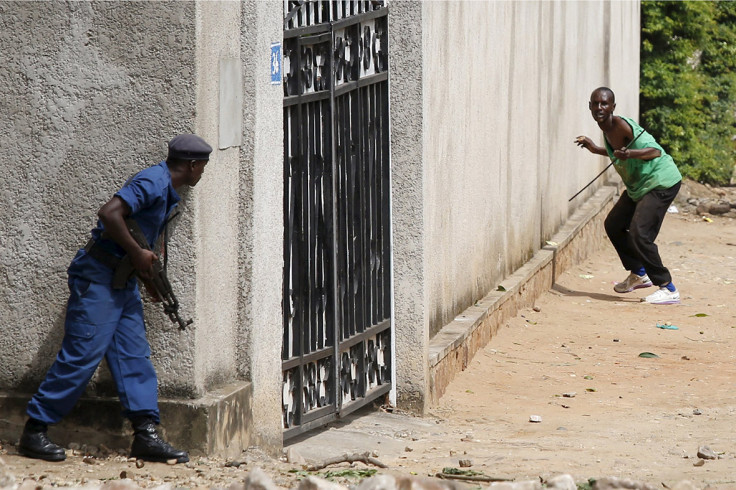Burundi coup: The country's long history of bloody overthrows

It is feared the military coup in Burundi could bring more bloodshed to the nation rocked by weeks of protests in which at least 20 people have been killed.
Thousands of Burundians took to the streets of the capital Bujumbura at the end of April, after President Pierre Nkurunziza announced he will seek a third term in the June election.
Protesters accused the leader of violating the constitution and the Arusha Peace Agreement, which says the president can only stay in power for two terms. At least 20 demonstrators were killed while reports emerged that police fired on protesters.
The coup is only the latest of a long list of overthrows that led to bloody conflicts in the African nation.
1965
Burundi, together with Rwanda, became a German colony in 19<sup>th century. The country, part of the German East Africa, remained under the German rule until the end of the Second World War, when Belgium took control of the so-called "Rwanda-Urundi", modern day Rwanda and Burundi, that became a Belgian League of Nations mandate.
The League of Nations was dissolved in 1945 and became a UN-trusted territory, still under the control of Belgium. Burundi gained independence and established a constitutional monarchy in 1962. The then leader Mwami Mwambutsa IV became the king.
Hutus and Tutsis were both represented in the parliament but political and ethnic tensions continued to run among the two groups.
The tensions culminated in an attempted coup d'etat by the Hutu-majority police in 1965, when Mwambutsa elected a Tutsi prime minister, sparking dissent among Hutu, who argued they were holding the majority of seats in parliament. The coup, as well as following riots, were violently suppressed by the army.
1966 and 1969
In 1966, the then prime minister Michel Micombero deposed Prince Ntare V and declared a republic, establishing a military regime. Violence continued to claim lives in the country. Three years later, politicians and military members were arrested and executed after rumours of a planned coup spread.
1976
Colonel Jean-Baptiste Bagaza took power in a coup. This time no one was killed.
1987 and 1996
In 1987, Pierre Buyoya became the new president following a coup that overthrew Bagaza. A year later, thousands of Hutus were massacred and other fled the country. Buyoya was in power until 1993. He became president again in 1996 following another military coup.
1993
The first democratically elected Hutu president, Melchior Ndadaye, was assassinated by Tutsi extremists three months after taking office. Hutus started massacring Tutsis and in retaliation, the army, mainly composed of Tutsis, killed thousands of Hutus.
It also killed whoever was suspected of being a supporter of the National Council for the Defense of Democracy (CNDD-FDD), which had allegedly tried to carry out a genocide against the Tutsis. The civil war started and claimed the lives of at least 300,000 people.
The warring factions reached a peace accord in 2000 in Arusha, northern Tanzania, signing the Arusha Peace Agreement, which called for an end of violence and democratic elections.
2005
Current leader Pierre Nkurunziza was elected. In 2006, former president Domitien Ndayizeye was arrested over coup allegation amid suspicions that he was tortured to confess he had planned an overthrow.

© Copyright IBTimes 2024. All rights reserved.







